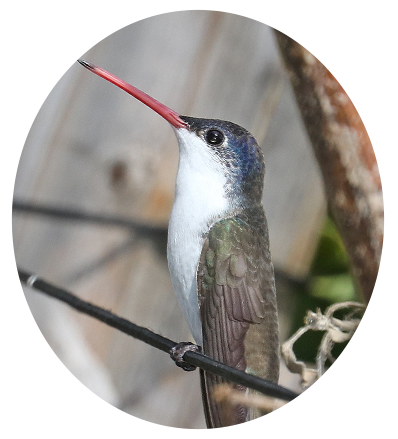

SCIENTIFIC NAME: Amazilia violiceps


The Violet-Crowned Hummingbird is a medium-sized hummingbird that is best distinguished by its violet-colored cap, from where it gets its name.

It measures about 3.94 inches long and weighs approximately 5 grams.
Adults are colored predominantly a dark olive green for their upperparts and tail. Underparts are predominantly white.
Bill of the male is straight and very slender. It is red in coloration, and shows a black tip.
Females are less colorful than the males.

CALL: A thin “tak”.
SONG: A string of high descending syllables.

Feeds primarily on nectar, but insects also comprise a portion of their diet.

In the U.S. portion of their range, they are mostly found in riparian areas with tall trees (especially sycamores and Cottonwoods, with a scrubby understory.
In Mexico, they can be found in a variety of habitats, including dry shrublands, in pine-oak woodlands, and in suburban gardens.

Birds in the U.S. and northern Mexico have long been viewed as primarily migratory, moving to central Mexico in the winter. Increasing numbers have been discovered overwintering in Arizona and New Mexico, however.
Most birds in the southern two-thirds of their range are permanent residents.

Nest is built in a protected location in a shrub or tree. It is made of plant fibers bound together with spider webs, lined with downy plant material, and camouflaged on the outside with lichens, moss, and bark.
The female builds the nest, incubates the eggs, and raises the young. She lays 2 white eggs.

SOURCES:
https://www.sdakotabirds.com
https://en.wikipedia.org